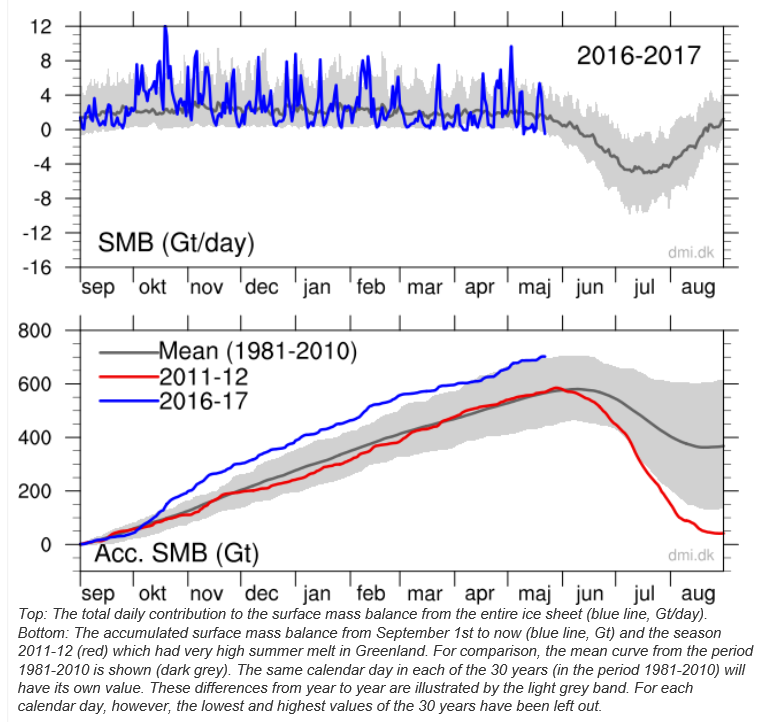ScienceDaily (June 13, 2009) The Greenland ice sheet is melting faster than expected, according to a new study led by a University of Alaska Fairbanks researcher and published in the journal Hydrological Processes.
Study results indicate that the ice sheet may be responsible for nearly 25 percent of global sea rise in the past 13 years. The study also shows that seas now are rising by more than 3 millimeters a year--more than 50 percent faster than the average for the 20th century.
UAF researcher Sebastian H. Mernild and colleagues from the United States, United Kingdom and Denmark discovered that from 1995 to 2007, overall precipitation on the ice sheet decreased while surface ablation--the combination of evaporation, melting and calving of the ice sheet--increased. According to Mernilds new data, since 1995 the ice sheet lost an average of 265 cubic kilometers per year, which has contributed to about 0.7 millimeters per year in global sea level rise. These figures do not include thermal expansion--the expansion of the ice volume in response to heat--so the contribution could be up to twice that.
The Greenland ice sheet has been of considerable interest to researchers over the last few years as one of the major indicators of climate change. In late 2000/early 2001 and in 2007, major glacier calving events sent up to 44 square miles of ice into the sea at a time.
Greenland Ice Sheet Melting Faster Than Expected; Larger Contributor To Sea-level Rise Than Thought
Study results indicate that the ice sheet may be responsible for nearly 25 percent of global sea rise in the past 13 years. The study also shows that seas now are rising by more than 3 millimeters a year--more than 50 percent faster than the average for the 20th century.
UAF researcher Sebastian H. Mernild and colleagues from the United States, United Kingdom and Denmark discovered that from 1995 to 2007, overall precipitation on the ice sheet decreased while surface ablation--the combination of evaporation, melting and calving of the ice sheet--increased. According to Mernilds new data, since 1995 the ice sheet lost an average of 265 cubic kilometers per year, which has contributed to about 0.7 millimeters per year in global sea level rise. These figures do not include thermal expansion--the expansion of the ice volume in response to heat--so the contribution could be up to twice that.
The Greenland ice sheet has been of considerable interest to researchers over the last few years as one of the major indicators of climate change. In late 2000/early 2001 and in 2007, major glacier calving events sent up to 44 square miles of ice into the sea at a time.
Greenland Ice Sheet Melting Faster Than Expected; Larger Contributor To Sea-level Rise Than Thought



